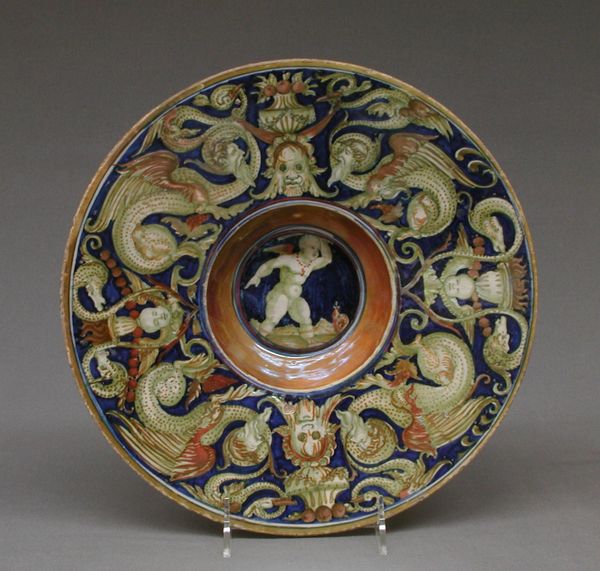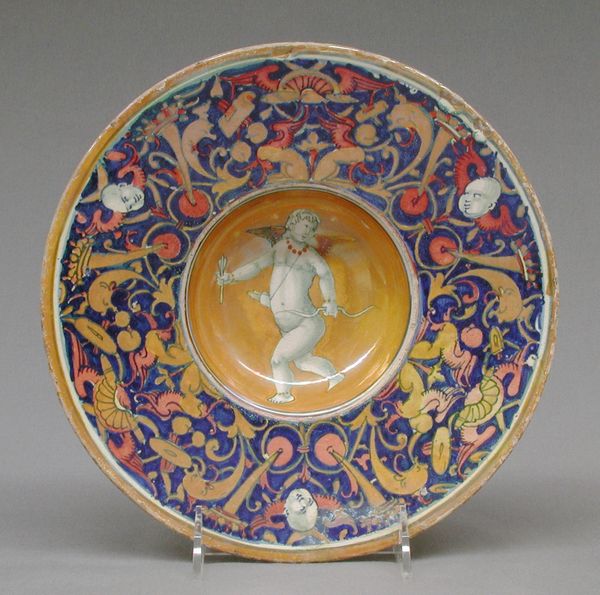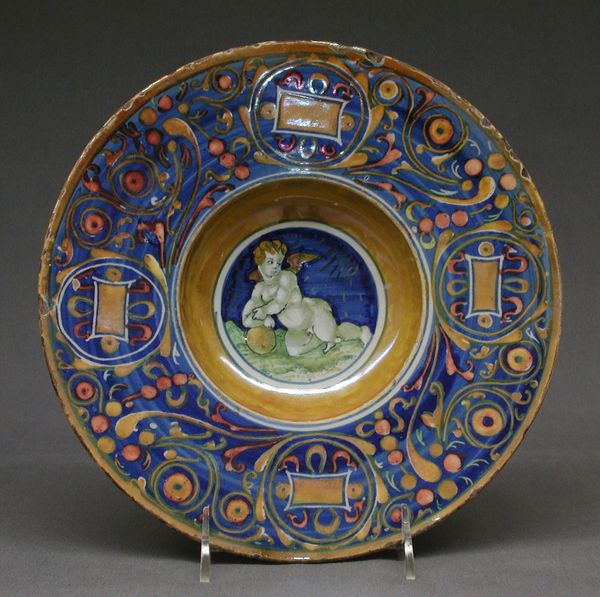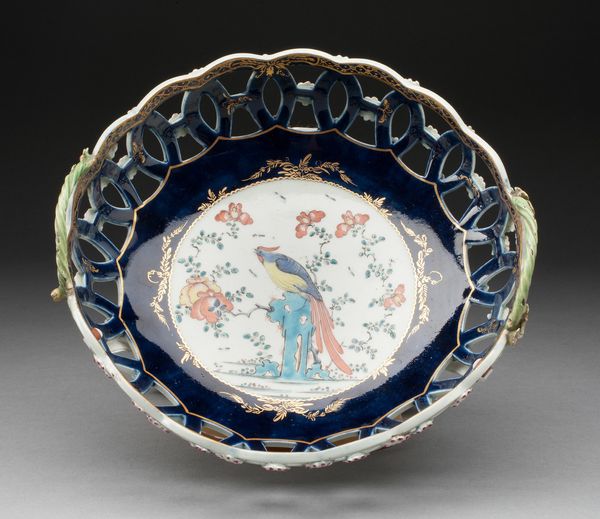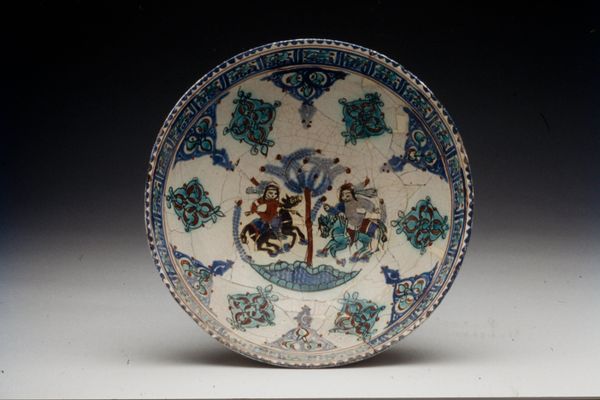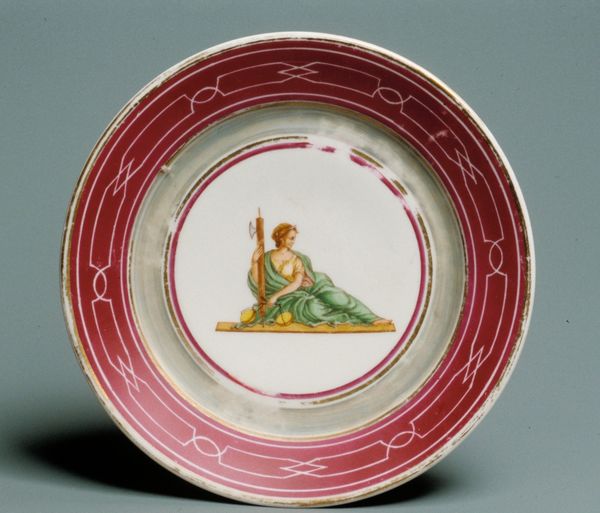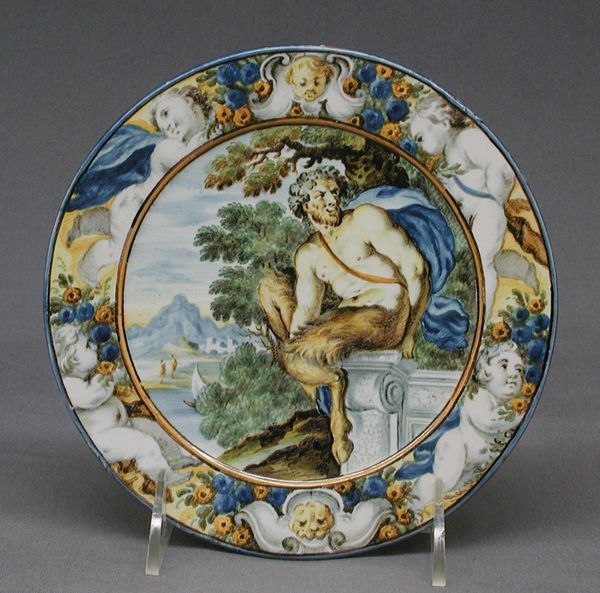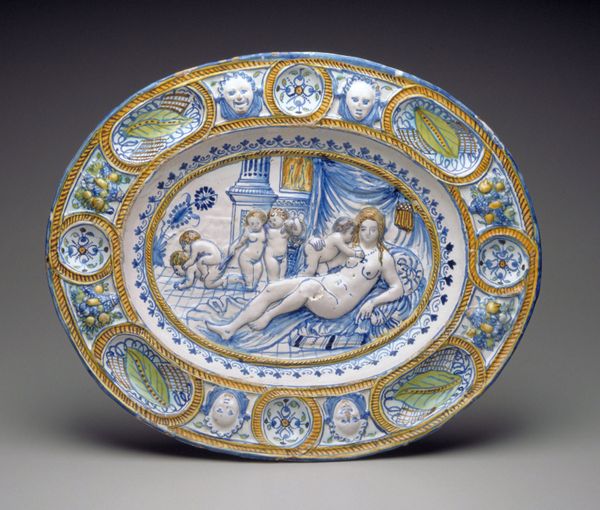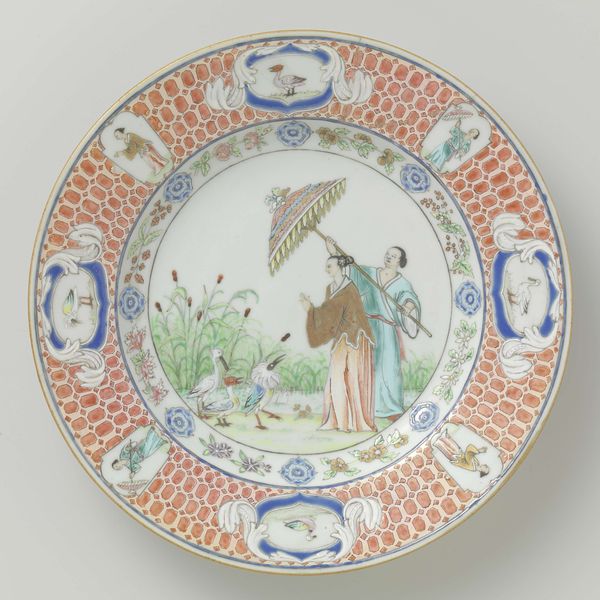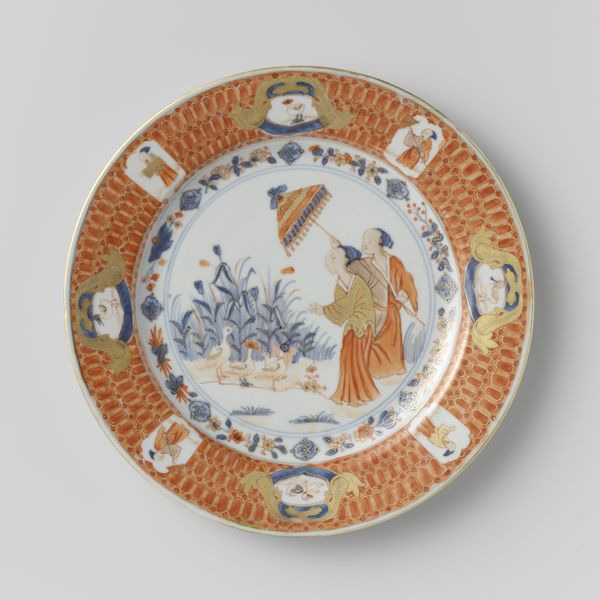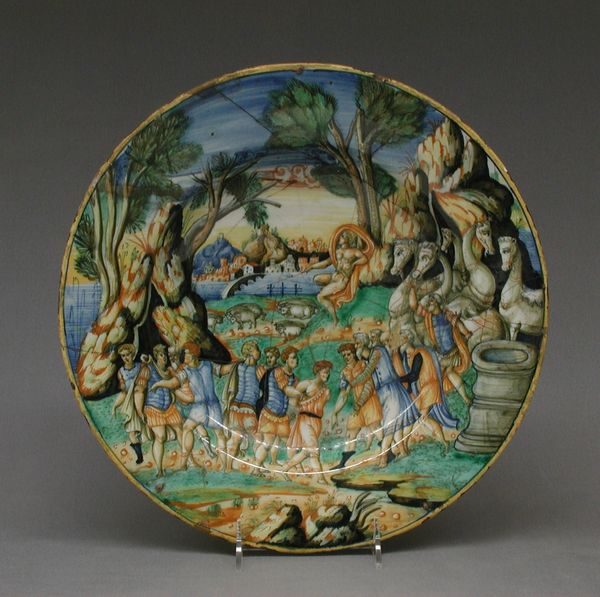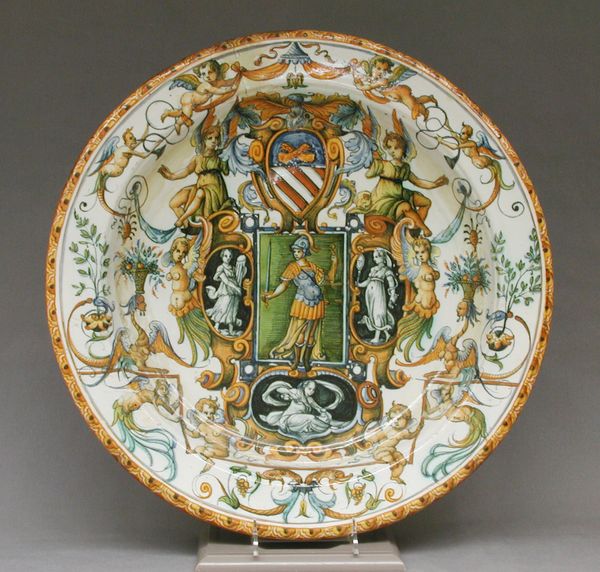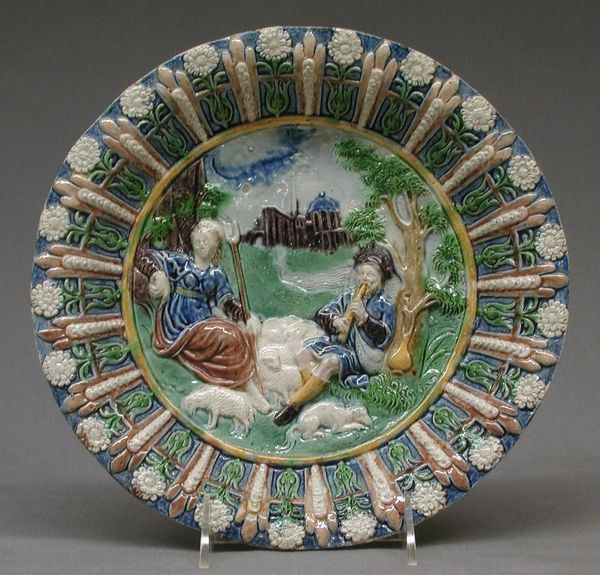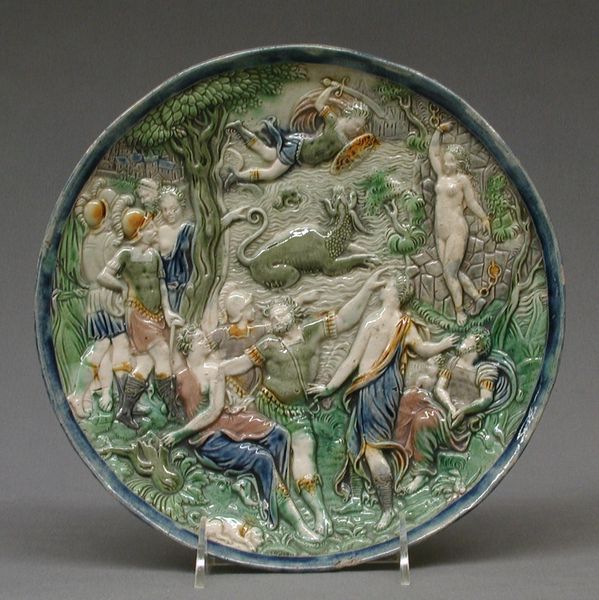
ceramic, sculpture
#
ceramic
#
jewelry design
#
11_renaissance
#
sculpture
#
ceramic
#
decorative-art
#
italian-renaissance
Dimensions: Overall (confirmed): 13/16 × 9 1/4 in. (2.1 × 23.5 cm)
Copyright: Public Domain
Curator: This ceramic dish, created sometime between 1555 and 1570, is currently held at the Metropolitan Museum of Art. Editor: My first thought is that it feels like a carefully curated piece of propaganda. It's not overtly aggressive, but there’s a clear intention to project power and legitimacy. Curator: Yes, the imagery points toward classical authority. Note the central figure with the laurel wreath, a direct reference to Roman emperors and triumphant figures. But the masks, the instruments… Editor: They add an intriguing layer. It's not just about military might. The inclusion of theatrical masks hints at cultural influence, suggesting the portrayed ruler governs not only through power but also through the arts and social control. I wonder what it meant to see one’s self or their rivals portrayed on a ceramic dish meant for domestic use. Curator: Pottery like this, especially in Renaissance Italy, often served a didactic purpose, transmitting classical knowledge and reinforcing social hierarchies. The surrounding blue is also fascinating. Deep blue held great significance during the period; derived from lapis lazuli, it implied considerable expense. Editor: The cost of the color speaks volumes about patronage. The person commissioning this piece aimed to convey status. The accumulation of symbols becomes overwhelming; what do you make of their specific arrangement? They seem intentionally chaotic, yet still balanced. Curator: Precisely. The placement of objects evokes abundance, perhaps hinting at the prosperity the leader brings to their dominion. Each object might be specifically coded to appeal to its original Renaissance viewers. Editor: Right. We often strip symbols of their original cultural weight. As a viewer, I wonder, what contemporary images or arrangements mirror this ambition of carefully constructed authority? The impulse hasn't disappeared; it just shifted mediums. Curator: Absolutely. Examining the symbolic construction here offers clues as to how leaders cultivate particular cultural and personal identities across time. Editor: Ultimately, reflecting on this Dish from a modern perspective serves to expose power relations. A seemingly benign piece is really charged with asserting a particular narrative. Curator: It certainly challenges us to delve into how power speaks through visual language.
Comments
No comments
Be the first to comment and join the conversation on the ultimate creative platform.
